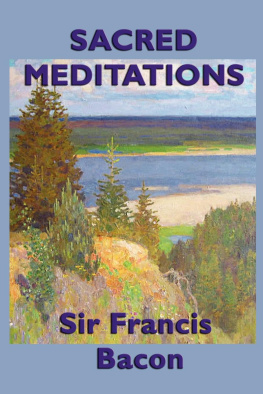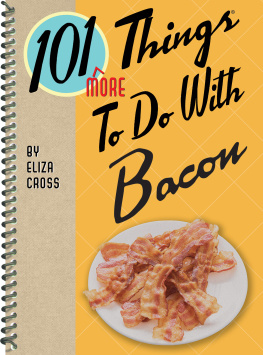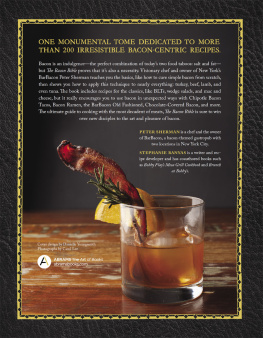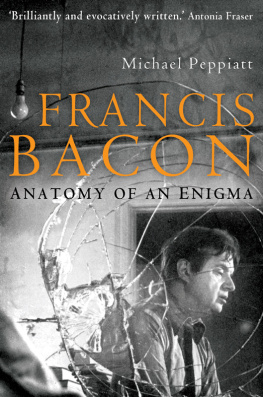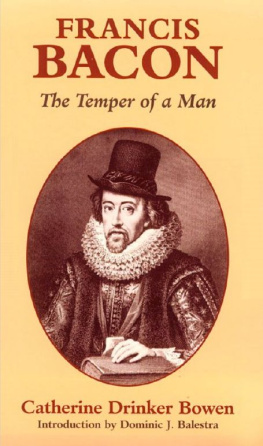After graduating from Cambridge in 1964, Michael Peppiatt worked briefly in London as an art critic on the Observer before settling in Paris, where he has been literary editor for Le Monde and arts correspondent for the New York Times and the Financial Times. He has written extensively on modern and contemporary art and curated numerous exhibitions. In 1985 he became editor and publisher of the magazine Art International. He is married to the art historian Jill Lloyd and now divides his time between Paris and London.
Praise for Francis Bacon: Anatomy of an Enigma
Proof again that biography thrives... This account of a life, as Peppiatt puts it, filled with the extremes of human emotion and devoted to expressing them with utmost force, is probably more readable and enjoyable than the attempts at exhaustive biography which surely lie ahead.
Gilbert De Botton, Literary Review
Michael Peppiatts biography puts [Bacons] story kindly and, I think, accurately down on paper for the record. For anyone who knew Bacon, it opens floodgates that bring back teeming memories mostly bizarre which personify the variations of the man whom Peppiatt calls an enigma.
Jeffrey Bernard, Sunday Times
Peppiatts conscientious detective work has thrown up some new evidence... Where Peppiatt is at his best, however, is in describing the work in such a way as to make you want to go and look at it, not only again, but right now.
George Melly, Daily Telegraph
Michael Peppiatts Francis Bacon takes the lid off all the unsavoury stews in which the great man immersed himself. It is both the very candid portrait of a painter and an intimate social history of a vanished London Bohemia.
Frederic Raphael, Sunday Times
Peppiatt is good on Bacons ill-starred lovers and their effect on his life and work... He sifts facts from legend in the early years to achieve the most convincing portrait yet published of this dissolute, amoral, asthmatic, immensely intelligent sprig of a well-to-do, unattractive English family living in Ireland... Future books on Bacon will owe him a solid debt.
Richard Shone, Spectator
Michael Peppiatt... has two vital qualifications for the task of writing about Bacon: he knew the painter well for many years, and is a practising art critic who has clearly pondered Bacons work deeply.
Martin Gayford, Sunday Telegraph
You never forget that you are reading not just about some Soho boho, but one of the greatest and most serious painters of the century.
Philip Hensher, Mail on Sunday
FRANCIS BACON
Anatomy of an Enigma
Michael Peppiatt
Constable London
Constable & Robinson Ltd
5556 Russell Square
London WC1B 4HP
www.constablerobinson.com
First published in the UK by Weidenfeld & Nicolson, A division of Orion Books Ltd, 1996
This revised edition first published in the UK by Constable, an imprint of Constable & Robinson Ltd, 2008
Copyright Michael Peppiatt, 1996, 2008
The right of Michael Peppiatt to be identified as the author of this work has been asserted by him in accordance with the Copyright, Designs and Patents Act 1988.
All rights reserved. This book is sold subject to the condition that it shall not, by way of trade or otherwise, be lent, re-sold, hired out or otherwise circulated in any form of binding or cover other than that in which it is published and without a similar condition including this condition being imposed on the subsequent purchaser.
A copy of the British Library Cataloguing in Publication data is available from the British Library.
ISBN: 978-1-84529-731-2
eISBN: 978-1-78033-737-1
Printed and bound in the EU
1 3 5 7 9 10 8 6 4 2
To Jill, Clio and Alexander
Contents
List of Illustrations
All The Estate of Francis Bacon. All Rights Reserved, DACS 2008.
All photographed by John Deakin. The Estate of Francis Bacon. All Rights Reserved, DACS 2008.
Acknowledgements
I should like to thank the following people very warmly for their help, their encouragement and their friendship:
Valerio Adami, Frank Auerbach, Kate Austin, Peter Beard, Lady Mary Rose Beaumont, Luc Bellier, Alice Bellony, Thrse Tigretti Berthoud, the late Valerie Beston, Tony Bevan, James Birch, David and Laurence Blow, Erik Boursier, Sir Alan Bowness, Ivor Braka, Dr Paul Brass, Adam Brown, Ben Brown, Don Bruckner, the late Henri Cartier-Bresson, Charles and Natasha Campbell, Narisa Chakrabongse, Krzysztof Cieszkowski, Michael Clark, David Clasper, Anna Coliva, Miguel and Carola Cond, Pieter Coray, Patrice and Mala Cotensin, Anne-Marie Crt de Chambine, Alan Cristea, John and Sarah Davies, Adrian and Jamie Dicks, the late Joe Downing, Jacques Dupin, Fred and Diana Elghanayan, Chris Eykyn, Luigi Ficacci, Lord and Lady Foster of Thames Bank, Lucian Freud, Chris Glass, Colin and Sophie Gleadell, John Golding, Paul Gray, Cyrille de Gunzburg, Jean and Terry de Gunzburg, Scott Gutterman, Claude Bernard Haim, Nadine Haim, Martin Hammer, the late Philip Herrera, Alastair Hicks, David Hockney, Waring Hopkins, Richard, Christina, Ben and Zoe Ives, Bill and Janet Jacklin, Glenys Johnson, Chester and Sandy Jones, Elsbeth Juda, Andrew Kalman, Andrew Lambirth, Mark Lefanu, the late Marjorie Loggia, Robert and Mary Looker, Bertrand Lorquin, Olivier Lorquin, Gillian Malpass, Raymond Mason, the late Pamela Matthews, France Mazin, Antoine Merlino, Henry and Alison Meyric Hughes, John Minihan, the late Henrietta Moraes, Richard Morphet, Pilar Ordovs, Jaime and Janetta Parlad, Ren Price, Robert Priseman, Tomaso Radaelli, John Richardson, the late Bryan Robertson, John Russell, Lady Lisa Sainsbury, Christopher and Carmel Shirley, Frank and Pauline Slattery, Carl Snitcher, Frances Spalding, Matthew Spender, Paul Stalham, Barbara Steffen, Angus Stewart, Ian and Mercedes Stoutzker, lex Susanna, Neil Thompson, Shelley Wanger, Gerry Welker and Thomas Williams.
I am particularly grateful to my editor, Andreas Campomar, who has been a tower of strength and a model of discretion throughout the intricacies of revising and updating the present book. His colleagues at Constable especially Hannah Boursnell and Sam Evans have all been similarly resourceful and sympathetic. I feel very privileged to have been able to work with such talented and dedicated people.
Special and warmest thanks to my agent, Gill Coleridge, and her colleague, Cara Jones, without whom, quite simply, this book would never lived to tell another tale.
My greatest debt is as always to my wife, the art historian Jill Lloyd. Not only do I receive her constant support and encouragement but also her expert judgement in all things. This book, like everything I write, is dedicated to her and to our two children, Clio and Alexander.
Preface
There is no way of telling what may yet become part of history. Perhaps the past is still essentially undiscovered!
Friedrich Nietzsche, Twilight of the Idols, 1889
It was several hours after I had finished my call to the Clnica Ruber in Madrid that I realized it was sixteen years to the day that Francis Bacon had died there. The nun I had spoken with, who cared for Bacon to the end, must have imagined that I had deliberately chosen 28 April as a highly charged, symbolic date for our conversation. In fact, I had been trying to get through to her for months, and I had even asked a friend with far better Spanish than mine to call in advance and explain to the hospital staff why I wanted to talk to her; whenever I rang thereafter, I was told she was tending patients or otherwise unavailable. But on that particular day Sor Mercedes materialized for the first time impelled at least in part, I imagine, by the strange, unpremeditated coincidence.
Next page





